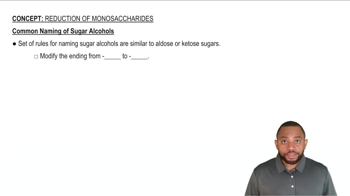Draw the Fischer projection for each of the following wedge–dash structures:
a.
 Verified step by step guidance
Verified step by step guidance Verified video answer for a similar problem:
Verified video answer for a similar problem:



 1:46m
1:46mMaster Fischer Projections Concept 1 with a bite sized video explanation from Jules
Start learning